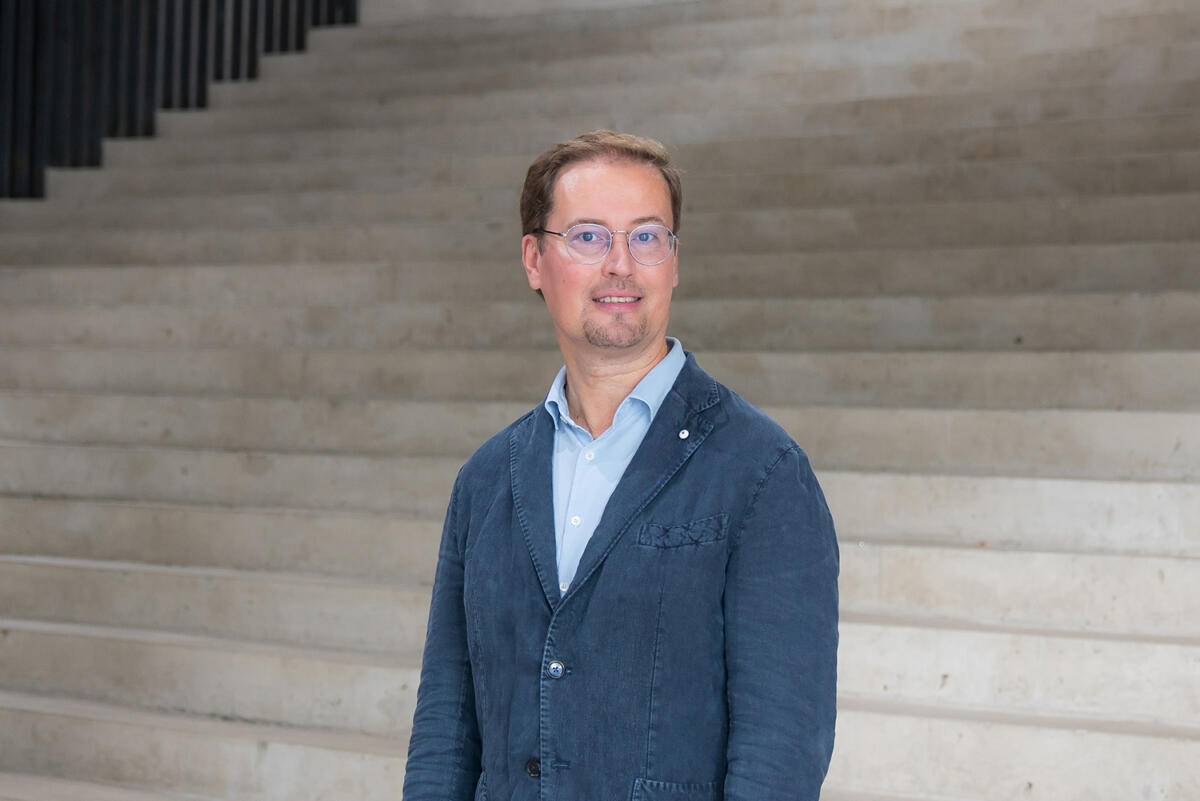Academy of Fine Arts Dean Leevi Haapala: “We will reinforce joint planning and the impact of exhibition activities”
Uniarts Helsinki’s Academy of Fine Arts is preparing for a new four-year period under the leadership of Leevi Haapala, who started in the dean’s role in the spring. Haapala took on the position after previously serving as the director of the Museum of Contemporary Art Kiasma.

Haapala was fully familiar with Uniarts Helsinki already before the dean’s role; he served as a member of the University Board starting from 2022 and in 2014–2015, he worked as the professor of exhibition studies at the Academy of Fine Arts. How would Haapala describe the Academy of Fine Arts and its growth in the last ten years?
“The academy has taken a big leap towards operating as Uniarts Helsinki. Joint planning and forward-thinking in planning are on a whole different level. It’s great to see in practice how the curriculum reform that was carried out back then is reflected on the current course selection, for example. Although we did, of course, just introduce a new curriculum this autumn.”
The autumn term at Uniarts Helsinki has been filled with vision development and planning work. Activities are planned in four-year cycles, and in a few months, it is time to embark on a new four-year period. At the Academy of Fine Arts, development of joint planning will be the main theme during the new period.
“The fundamentals of our operations won’t change: We will invest in teaching and research. My hope is to make even better use of the art that is created as part of our core activities and to reinforce cooperation and planning between different subject areas so that the general understanding of art teaching and its methods would grow. Our operational environment is changing on a continuous basis, which makes the way that we train our students for the working life all the more crucial. It’s important to make operating as Uniarts Helsinki more organic and at the same time, maintain a strong individual academy. As our financial resources are on the decline, joining forces and collaborating is how we’re able to operate more sustainably.”
I hope that teachers and students have the courage to discuss topical issues through their art and create works that comment on the time that we live in.
One of the focus areas that Academy of Fine Arts will have during the next four years is internationalisation. Approximately 10% of teachers and about 20% of students at the Academy of Fine Arts come from outside of Finland, and the percentages are on the rise. Haapala finds that this is a testament to the academy’s high-quality teaching and reputation and the established status of Finnish contemporary art in the international art scene.
“We in Finland have strong traditions in art as well as a daring attitude and a unique way of thinking. Here at the Academy of Fine Arts, we have engaged in long-term work to promote international affairs and fostered our cooperation with our partners. We have a lot to offer to the international art scene. We will continue investing in the Visiting Professor Programme, which complements our own teaching and research by welcoming internationally interesting pedagogues and artists as guests at the academy with support from the Saastamoinen Foundation.”
One of the six main goals of Uniarts Helsinki’s strategy is that art is part of the solution to the ecological sustainability crisis. In the context of the Academy of Fine Arts, the responsible use of materials is an essential part of a sustainable mindset. Haapala thinks that ecological aspects should be built-in in everything the university does, but the themes should also be actively brought up.
“In terms of the education we offer, we teach students to use materials responsibly and to develop production methods that are sustainable also in the future. The academy highlights this also in its everyday practices related to exhibitions, resources for building walls and its efforts to travel by land. Alongside ecological and financial sustainability, we must also put efforts into improving social sustainability and operational development with our partners.”
One of Haapala’s goals is to give the public an even clearer window into the art that is being created at the academy and into the artists’ approaches and mindsets, and consequently, contribute to the discussions going on in society.
“I hope that teachers and students have the courage to discuss topical issues through their art and create works that comment on the time that we live in, forming a direct link to the discussions going on in society. The exhibitions that we have scheduled for the rest of the year are a good example of this. An exhibition titled Endless Drop deals with fear, anxiety and uncertainty experienced by young people concerning their future. The exhibition that follows Endless Drop will reflect on the ownership of art by Indigenous communities.”
Before the end of the year, the academy will also introduce a new gallery concept on the second floor of the Mylly building, as the space known as Myllytori will start offering a place for short-term exhibitions. The call for applications is open twice each year, and the exhibitions will feature works by a specific student or works made during courses.
“Many of our alumni run artist-driven places in the Sörnäinen and Kallio neighbourhoods, and our goal is to be a key operator in the creative sector. I also hope that some of the top professionals in the field will come and visit us to see what kinds of visual artists are about to enter the art scene. The Myllytori gallery helps the public keep their fingers on the pulse of what’s going on at the academy through works by students and teachers alike. The place is spacious and offers a wonderful opportunity to take advantage of the spectacular architecture of Mylly when exhibiting art.”